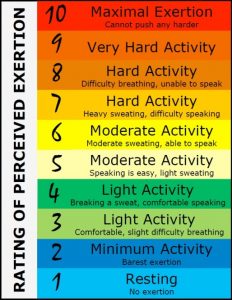Every soldier is an expert in close combat.
Every soldier is a potential leader.
Every soldier is physically tough.
Every soldier has a smart phone, and it’s time we start to harness that to enable better delivery of physical training, education and rehabilitation. In my last article I discussed the concept of a 'network of strength and conditioning cells' for the delivery of consistent programming throughout Army. In this one I will focus on the use of technology and 'apps' to assist in this delivery and will outline what I think can be done with the advancement of this recent technology.
This is a concept being explored currently on a smaller scale, however, I believe this is something that can be introduced throughout Army to provide tangible and valuable data, education and tracking. I envisage a simple and focused app that will track individuals’ training workload, help combat overuse injuries and ultimately enable harder training through data based progression over time.
If done correctly it could also be a powerful tool to encourage ownership of programs and performance, and will promote a professional approach to hard training.
App Core Functions
In order to maximise usage and utility, the app should have only two core functions or features where soldiers have to input data, these being: Training Session Rating of Perceived Exertion (RPE); and a wellbeing questionnaire such as the POMS, RESTQ-Sport or DALDA. The app should have a very simple user interface and take less than one minute to complete. Both measures are very accurate and proven to be reliable even when compared to more expensive testing as discussed by my colleague Nick Alexander here.
RPE is an established, well researched, and useful numerical scale, as shown below. It provides a simple, low cost and practical way to track load for athletes and soldiers over time, ensuring they are being suitably progressed and challenged and avoiding large spikes leading to injury risk.

Wellbeing Questionnaires are a simple tool that can provide excellent information on how soldiers are adapting to their current load.
When used together, these metrics can maximise training intensity for a company or group who work together and can help build a complete picture of individual soldiers, protecting them from overuse injuries before they happen. For instance, a session RPE of 10/10 is not of concern if hard training is the goal, however, what if the group average is 7/10, but an individual rated it as 10/10 and their wellness questionnaire data shows signs of poor recovery? In this case the combat fitness leader (CFL) or physical training instructor (PTI) master interface would automatically flag this, allowing he/she to explore the situation, and if required, reduce the training intensity for the following week. Or in an instance where a member consistently rates sessions below his peers, they might need to be progressed at a faster rate in order to continue their individual development.

App Extras/Nice to haves
The two functions above can literally be tap and forget. They are quick to use and therefore more likely to be used. However, there is scope to offer more for those who want to further their own understanding, progress and wellbeing.
Track fitness metrics over time. Soldiers could have the option to input their basic fitness assessment (BFA) data, strength data or other relevant results from point of entry to end of career. Or to take this one step further, a soldier's BFA data could be recorded at the time by a CFL using a tablet, which would automatically be uploaded onto their profile. This would show the soldier's performance over time and indicate where they have improved or taken a backwards step.
Collect baseline results on a number of key rehabilitation tests. Certain key tests have shown to be very reliable predictors of return to sport readiness. A selection of the best tests for common injuries in Army could be added, either during ab-initio training or annually, and be stored on the soldiers profile. Imagine if a solider could walk into the physiotherapy department on day one of rehab with their pre-injury metrics on-hand providing a baseline set of goals to determine progress and optimise return to work, PT and sport?
News feed for training. This could be an area where soldiers 5’s, videos or articles on fitness topics could be posted, for example: fitness myth busting; evidenced based warm ups and cool downs; common programs for strength or conditioning; and individual training options for rowers, cyclists or swimmers. A news feed could also include advice from other Army health professionals such as psychologists, doctors and physiotherapists, or even consultation with nutritionists.
The development of a tailored fitness app could be a powerful tool to optimise and enable 'harder' training through accurate tracking and monitoring of progress over time. This would also help reduce the risk of injury and improve 'training health literacy' within Army.










Are you guys aware of the Fusion sport app currently in a trial phase within 3rd Bde?
It tracks everything mentioned in the article (and much more).
This and the revelations being written about in your previous articles have been in place for some time within 3rd Bde. High performance programs and smartphone apps have been running for five years with great results noted and a scientific research article due to be published soon.
I note in a previous article you mentioned a silo effect in regards to different programs and initiatives being implemented within combat Bdes. It is starting to appear this is an imitation effect rather than a silo effect.
It would be great to work in collaboration with you and your team on your next article if you have one in mind. Perhaps we could reduce the silo writing effect and produce some material that is not based or biased out of a single Bde.
As an operator on the ground I thank you for your passion in this field, and completely concur with what you are trying to put across. I hope to assist you value add to your articles in the future.
Great to see 3BDE leading the way. Is there a link that I can get to obtain a copy of the app you mentioned above?
An excellent article which read a thought I’ve been having for some time. I have a reserve squadron spread across diverse city and regional locations. We parade monthly at the moment providing one effective opportunity to conduct group PT.
Most individuals are motivated to conduct PT I their own time, and I believe strongly that an app which gives them a targeted training program which supports their ARES trade job requirements would be embraced.
Add to this the opportunity to have Troop and Squadron leaderboards, most improved and benchmarks to achieve would improve cohesion, morale and of course physical resilience. It would form a method of reducing risks associated with attempting PESA and field training.
The SOFIT app is a model that I have seen, and I imagine similar functionality. The input of starting benchmarks with recommended loads and times generated from there.
I have the same question as Jason above. What app was 3 Bde using? What was the result and what consideration has been given to a trial embracing reservists, for whom I think the model will work particularly well?